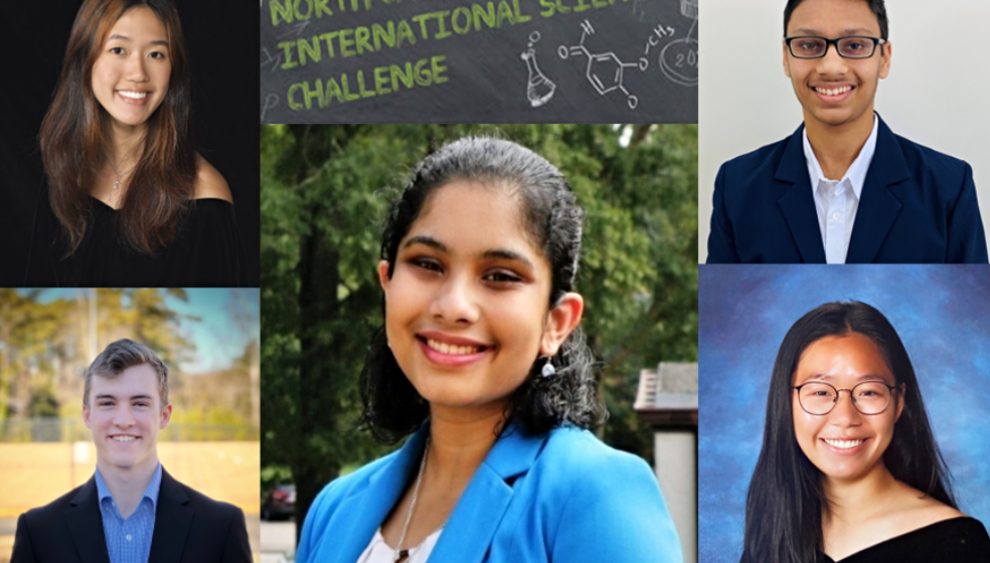Every year, the North Carolina Science, Mathematics and Technology Education Center (SMT Center) runs a competition for high school STEM students, and every year dozens of exceptional students from around the state submit projects with a chance to go to trip to China to compete at the Beijing Youth Science Creation Competition. While that trip has been cancelled this year, five North Carolina students were selected to send research papers and presentations to a panel of esteemed international judges.
Let’s meet the winners of the 2022 North Carolina Science Challenge!
Grace Lin (Charlotte, N.C.)
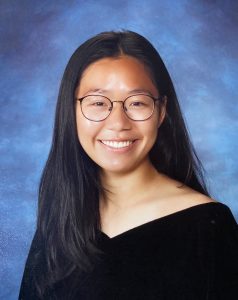 Grace is a Charlotte native in her final year at the North Carolina School of Science and Mathematics (NCSSM). She looks forward to attending the University of North Carolina at Chapel Hill in the fall.
Grace is a Charlotte native in her final year at the North Carolina School of Science and Mathematics (NCSSM). She looks forward to attending the University of North Carolina at Chapel Hill in the fall.
Grace’s project is titled “Investigation of the Combined Effects of GSK1016790A and OPC-31260 on Autosomal Dominant Polycystic Kidney diseased C. elegans” and she was able to conduct all her research at the NCSSM labs and facilities. As is often the driving force behind impassioned research, Grace had personal reasons for selecting this topic. “I decided to pursue this topic not only because of the disease’s high prevalence, but also because it is a disease close to my heart,” she says. “A family member of mine has ADPKD, so I wanted to dedicate my project to developing a treatment.”
Autosomal Dominant Polycystic Kidney Disease (ADPKD), is one of the most common hereditary kidney diseases, and has no standardized treatment. Grace sought to develop a novel treatment for ADPKD by combining two treatments both currently undergoing clinical trials. Grace created a joint treatment and administered it to her model organism, C. elegans, a nematode commonly used for ADPKD research. The results of the efficacy of her joint treatment were compared against the efficacy of either treatment individually, and she was surprised to find that the joint treatment was not as effective as either drug alone. With this in mind, she hopes to continue her research by pursuing a secondary experiment: identifying a novel drug pathway and testing various substances for their efficacy.
In her last summer before college, Grace plans to work and visit NC’s state parks and beaches, paint, play the guitar, and work on her knitting and crocheting.
Jay Nimbalkar (Cary, N.C.)
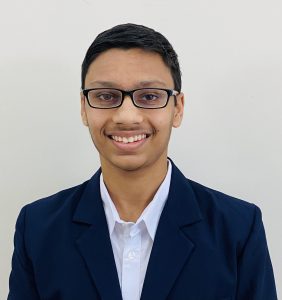 Jay is a junior at Green Hope High School, who kicked off his research project after he realized how difficult it was to be an environmentally conscious consumer. “I quickly realized,” said Jay, “that it was not easy to buy sustainable food products. It was nearly impossible to tell what items were truly eco-friendly, since there were no existing metrics for products regarding their holistic sustainability.” From this realization, the idea for “Sustainability Scanner: Empowering Consumers to Make Eco-Friendly Grocery Purchases” emerged.
Jay is a junior at Green Hope High School, who kicked off his research project after he realized how difficult it was to be an environmentally conscious consumer. “I quickly realized,” said Jay, “that it was not easy to buy sustainable food products. It was nearly impossible to tell what items were truly eco-friendly, since there were no existing metrics for products regarding their holistic sustainability.” From this realization, the idea for “Sustainability Scanner: Empowering Consumers to Make Eco-Friendly Grocery Purchases” emerged.
Many people trying to lead a green lifestyle encounter challenges at the grocery store, finding it difficult and time-consuming to make sustainable choices. Jay’s research at local grocery stores helped him develop an app that solves this problem by quickly providing an accurate, holistic view of a food item’s sustainability using a robust scoring system. The app allows users to make informed purchases and embrace more environmentally conscious behaviors.
With one more year left at Green Hope, Jay looks forward to continuing to create solutions to solve environmental issues through a computational lens.
Jake Rose (Wilmington, N.C.)
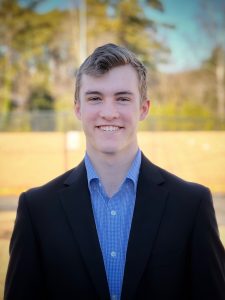 Jake is a senior at NCSSM, who believes that his interests in both engineering and medicine can overlap to better serve the future.
Jake is a senior at NCSSM, who believes that his interests in both engineering and medicine can overlap to better serve the future.
Jake’s project, “Development of a Bioactive, Biodegradable, and Variable Density 3D Printer Filament for Patient-Specific Bone Reconstructive Implants,” sought to address a number of shortcomings in orthopedic implant practices today: Implants are not patient-specific (meaning they are not sized or scaled to suit a specific body). They do not interact chemically with the body and, as a result, are often rejected by the body. And, most are not biodegradable, so often a second surgery is required to remove the old implant when it reaches the end of its useful life.
Jake addressed each issue with one elegant solution, a variable density 3D printer filament for use in patient-specific bone implants. First, he notes that his implant can be customized to a patient’s specific requirements using a 3D printer, so hospitals can actually produce these implants on-site. The resulting implant is, therefore, accessible and unique to each patient. He continues, “I was able to integrate a chemical foaming agent, improving the acceptance of the implant into the body and bone growth around the implant.” Finally, the materials used are biodegradable, eliminating the need for additional surgeries or disposal efforts.
Jake hopes to continue his work on this filament and perhaps one day see it help breathe new life into ageing or injured populations.
Hrishika Roychoudhury (Charlotte, N.C.)
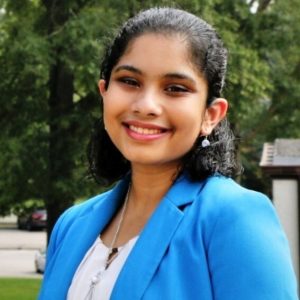 Hrishika is a senior at NCSSM. She has been accepted to a number of universities, but is still deciding. Her project combines two worthwhile missions: fighting cancer and using sustainable resources to do it. During her research, Hrishika found that many of the cancer-fighting agents in use today are not only expensive and difficult to generate, they are also environmentally taxing. So, in a hunt to find an alternative to effective (but costly) traditional silver nanoparticles, Hrishika began work on her project: “Development of an Anti-Cancer Agent – Green Synthesis of Biogenic Silver Nanoparticles Using Agri-Food Byproducts as a Novel Reducing Agent.”
Hrishika is a senior at NCSSM. She has been accepted to a number of universities, but is still deciding. Her project combines two worthwhile missions: fighting cancer and using sustainable resources to do it. During her research, Hrishika found that many of the cancer-fighting agents in use today are not only expensive and difficult to generate, they are also environmentally taxing. So, in a hunt to find an alternative to effective (but costly) traditional silver nanoparticles, Hrishika began work on her project: “Development of an Anti-Cancer Agent – Green Synthesis of Biogenic Silver Nanoparticles Using Agri-Food Byproducts as a Novel Reducing Agent.”
Through her Research in Chemistry programs at NCSSM, Hrishika took advantage of labs and research facilities where she developed a green synthesis, adopting biological processes, that used antioxidant-rich and readily available food byproducts like pecan shells as effective reducing agent. Her process is simple, safe, cost-effective, and eco-friendly.
As she sets off for university in the fall, she hopes to pursue grant opportunities that will allow her to continue to hone her focus on this research, manipulating the size, shape, and characteristics of her nanoparticles to find those most effective in real-world treatments. She is most grateful to her instructors and mentors, Dr. Michael Bruno and Dr. Tim Anglin, for supporting her research.
Winnie Wang (Charlotte, N.C.)
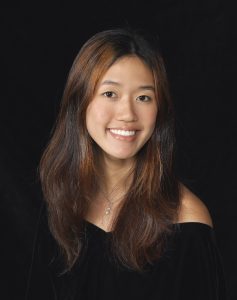 Winnie is a senior at NCSSM and bound for the University of Pennsylvania this fall. Like many stellar scientists and inventors before her, Winnie’s project was inspired by special people around her in need. Noting that several people close to her are battling cancer now, Winnie says, “I know that treatment is often expensive, inaccessible, and inconvenient, so I wanted to create an alternative treatment that would be easier to administer while maximizing efficacy.”
Winnie is a senior at NCSSM and bound for the University of Pennsylvania this fall. Like many stellar scientists and inventors before her, Winnie’s project was inspired by special people around her in need. Noting that several people close to her are battling cancer now, Winnie says, “I know that treatment is often expensive, inaccessible, and inconvenient, so I wanted to create an alternative treatment that would be easier to administer while maximizing efficacy.”
Her project, “Rational Design and Synthesis of a Novel Class of Boronic-Acid Containing Tubulin Inhibitors as Tumor Vascular Disrupting and Antiproliferative Agents” was born out of this desire to find a cheaper, more effective treatment than chemotherapy or radiation. During her research in her high school labs, she created a class of toxin-free drugs that targets solid tumorous cancers and halt cell division and causes a structural collapse of tumors. They are administered orally, reducing costs and making them more accessible for those who live far from treatment centers.
What’s next for Winnie? Of course, she wants to hone her treatments further to make even more affordable and effective derivatives, but she is also keen to use her last summer before college to explore other cultures (especially the food!). She sets off for Morocco before beginning her studies in economics and educational policy in the fall.
This year’s selected students will participate in special behind-the-scenes experiences at museums in Washington, D.C., as well as participate in special enrichment opportunities with a leading scientific organization. The NCISC is offered jointly by the North Carolina Science, Mathematics and Technology Education Center (SMT Center) and the Morehead Planetarium and Science Center.
Click here to learn more and how to participate in future competitions.
